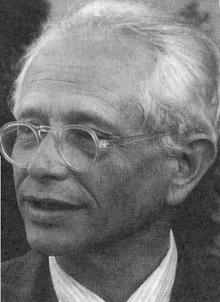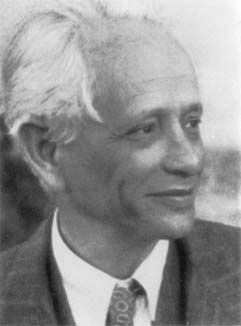

Max Dehn Seminar
on Geometry, Topology, Dynamics, and Groups
Academic year 2008 - 2009
| Date | Speaker | Title — click for abstract (if available) |
| January 23, 2008 | Christopher Cashen University of Utah | Quasi-isometries between tubular groups |
| January 30, 2008 | Christopher Cashen University of Utah | Quasi-isometries between tubular groups, II |
| February 6, 2008 | Dariusz Wilcznski Utah State University | Composition Algebras and the Fundamental Theorem of Algebra for Polynomial Equations with a Tame Tail |
| February 13, 2008 | Mladen Bestvina University of Utah | Can higher rank lattices embed in Out(F_n)? |
| February 27, 2008 | Benson Farb University of Chicago | Analogies and contrasts between Riemann's moduli space and locally symmetric spaces |
| March 5, 2008 | Yves de Cornulier University of Rennes | Lie groups, their Dehn functions, and their asymptotic cones |
| April 2, 2008 | Kevin Wortman University of Utah | Cohomology of rank one arithmetic groups over function fields |
| April 10, 2008 | Alexander Fel'shtyn Boise State University | Groups with proerty R∞ and twisted Burnside-Frobenius theorem |
| April 16, 2008 | Daniel Allcock University of Texas at Austin | The Hurwitz monodromy problem in degree 4 |
| September 17, 2008 | Mladen Bestvina University of Utah | A hyperbolic Out(F_n)-complex, Part I |
| September 24, 2008 | Mladen Bestvina University of Utah | A New Proof of Morita's Theorem |
| October 3, 2008 | Jean-Francois Lafont The Ohio State University | A introduction to algebraic K-theory |
| October 8, 2008 | Yael Algom Kfir University of Utah | Negative curvature phenomena in outer space |
| October 22, 2008 | Mladen Bestvina University of Utah | A hyperbolic Out(F_n)-complex, Part II |
| November 12, 2008 | Ken Bromberg University of Utah | Convexity of length functions on Fenchel-Nielsen coordinates for Teichmüller space |
| November 29, 2008 | Ian Biringer University of Chicago | Geometry and rank of closed hyperbolic 3-manifolds |
| December 3, 2008 | Julien Paupert University of Utah | Discrete complex reflection groups in PU(2,1) |
| January 21, 2009 | Kevin Wortman University of Utah | Dehn functions of linear groups |
| January 28, 2009 | Kevin Wortman University of Utah | Dehn functions of linear groups II |
| February 4, 2009 | Kai-Uwe Bux University of Virginia |
Thompson's group V is linear (or at least, it should be)
V has subgroups that are so close to being a BN-pair
that the classical proof for simplicity of linear groups with
irreducible Coxeter system goes through almost without change.
It turns out that the subgroup F plays the role of the solvable
Borel subgroup. [joint work with Jim Belk]
|
| March 27, 2009 | Martin Bridgeman Boston College |
Orthospectra of GEodesic Laminations
Given a measured lamination on a finite area hyperbolic surface we
consider a natural measure M on the real line obtained by taking the
push-forward of the volume measure of the unit tangent bundle of the surface
under an intersection function associated with the lamination. We show that
the measure M gives summation identities for the Rogers dilogarithm function
on the moduli space of a surface.
|
| April 9, 2009 | Robert Young IHES |
The Dehn function of SL(n,Z)
The Dehn function is a group invariant which connects geometric and
combinatorial group theory; it measures both the difficulty of the
word problem and the area necessary to fill a closed curve in an
associated space with a disc. The behavior of the Dehn function for
high-rank lattices in high-rank symmetric spaces has long been an open
question; one particularly interesting case is SL(n,Z). Thurston
conjectured that SL(n,Z) has a quadratic Dehn function when n>=4.
This differs from the behavior for n=2 (when the Dehn function is
linear) and for n=3 (when it is exponential). In this talk, I will
discuss some of the background of the problem and sketch a proof that
the Dehn function of SL(n,Z) is at most quartic when n >= 5.
|
| April 22, 2009 | Natasa Macura University of Utah/ Trinity University | — |
| April 30, 2009 | Matt Stover University of Texas at Austin |
Volumes of Picard modular surfaces
Picard modular surfaces are the non-compact arithmetic complex hyperbolic
2-orbifolds. I will prove that the two orbifolds studied by John Parker as
candidates for orbifolds of smallest volume are indeed the unique
arithmetic complex hyperbolic 2-orbifolds of minimal volume. Given time, I
will also make some remarks on finding minimal volume manifolds.
|
| May 6, 2009 | Valerio Pascucci Scientific Computing and Imaging Institute, University of Utah |
Multi-scale Morse Theory for Scientific Data Analysis
Advanced techniques for understanding large scale scientific data are
a crucial ingredient in modern science discovery. Developing such
techniques involves a number of major challenges in management of
massive data, and quantitative analysis of scientific features of
unprecedented complexity. Addressing these challenges requires
interdisciplinary research in diverse topics including the
mathematical foundations of data representations, algorithmic design,
and the integration with applications in physics, biology, or
medicine.
In this talk, I will present a set of case in the use of Morse theory
for the representation and analysis of large-scale scientific data.
Due to the combinatorial nature of the approach, we can implement the
core constructs of Morse theory without the approximations and
instabilities of classical numerical techniques. We use topological
cancellations to build multi-scale representations that capture local
and global trends present in the data. The inherent robustness of our
combinatorial algorithms allows us to address the high complexity of
the feature extraction problem for high-resolution scientific data.
|
Current seminar Archive of past talks
Max Dehn Seminar is organized by Mladen Bestvina, Ken Bromberg, Patrick Reynolds,
Jing Tao, Domingo Toledo, and Kevin Wortman.
This web page is maintained by Patrick Reynolds and Jing Tao.

